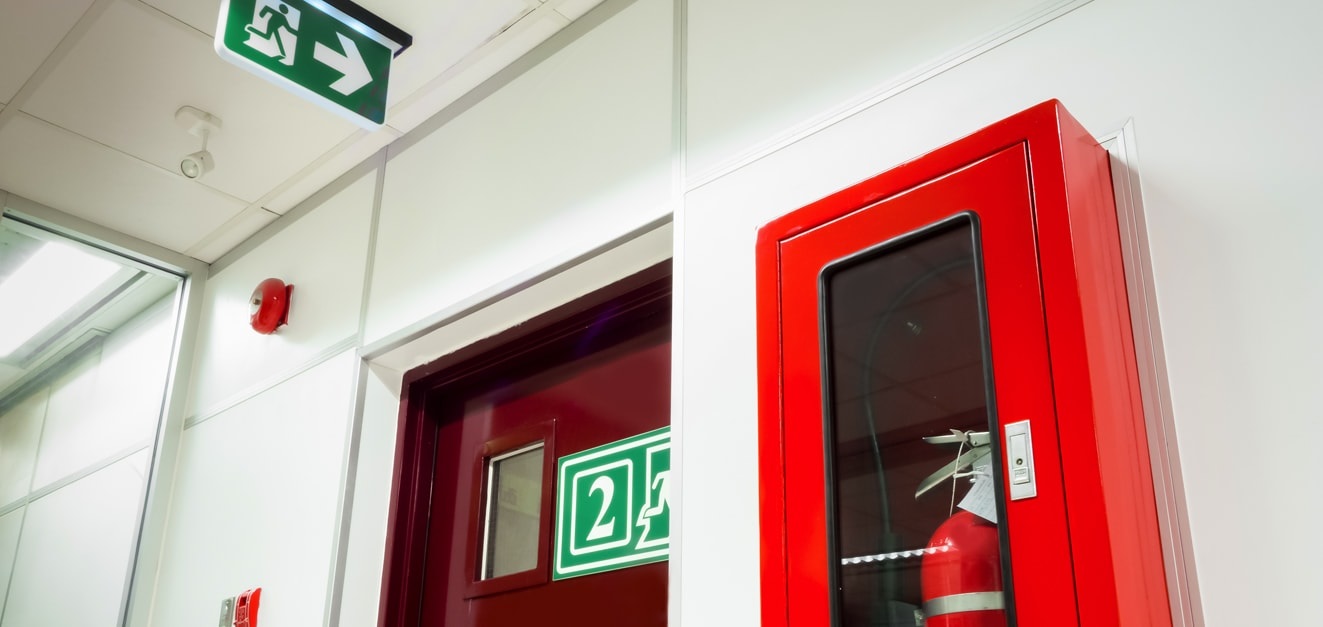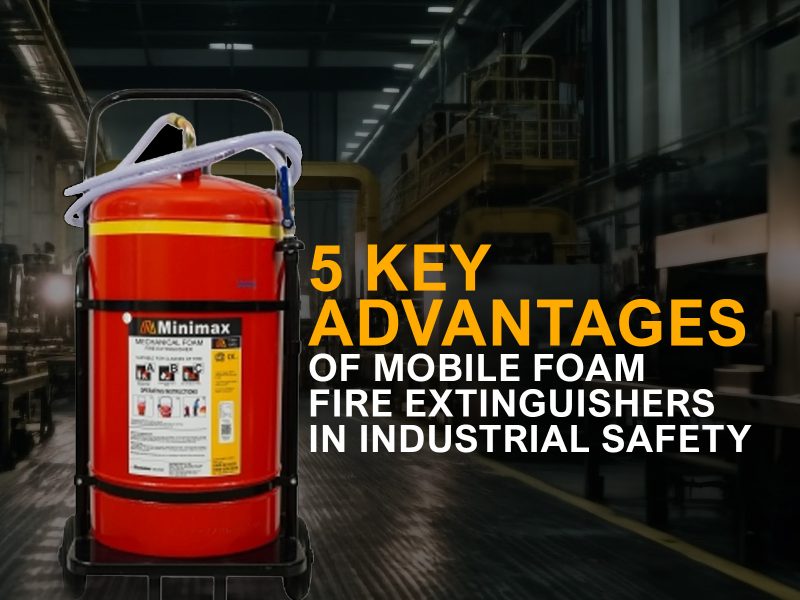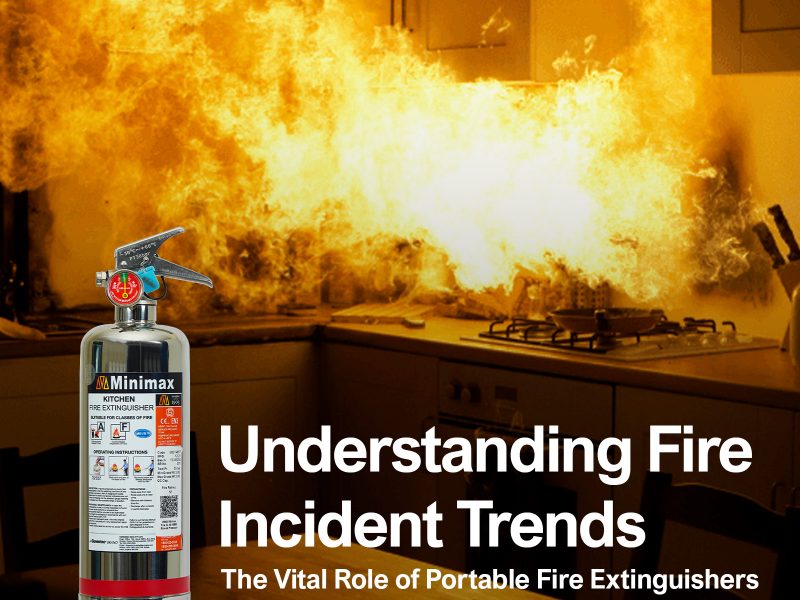
Fire Emergency is an unforeseen situation that threatens employees, customers, or the public. It can disrupt or shut down operations and can cause damage to a person or property. No one expects a fire to break out in the first place, but we cannot avoid such types of emergencies. Fires and explosions kill more than 200 and injure more than 5,000 workers/employees each year. There is a long and tragic history of workplace fires that caused more damage due to the obstructed fire exits and faulty extinguishing systems. Employers need to provide proper fire exits, firefighting equipment, and training to prevent fire causalities and injuries at the workplace. It is vital to ensure your employees are ready in case of a fire situation in your workplace and follow a proper evacuation process at short notice.
Create an Emergency Action Plan
An organized and well-prepared emergency response plan helps in preventing controlled damage in case of emergencies. The purpose is to facilitate and define employer & employee actions during workplace emergencies. Preparing an emergency action plan to outline the employee responsibilities during a fire or another emergency is an effective way to be ready for an unexpected situation.
Below are the basic recommendations an emergency action plan should include:
Escape route diagrams:
Display the Main and secondary emergency exits, travel paths, directions for those with disabilities, and outside assembly points. All the fire alarm pull stations, fire extinguishers, hydrant locations, hose stations, and fire alarm controls inside and outside the building shall be marked with labels or glow signboards.
Evacuation policies and procedures:
The plan should outline evacuation routes, people control processes, procedures for assisting people with disabilities, and preferred modes of reporting to the fire authorities (Fire Brigade Department).
Responsibilities of designated employees:
Decide whether to instruct employees to use fire extinguishers or evacuate immediately. Specify rescue and medical duties if any workers are designated to perform them. Assign a designated authority to stay behind and manage or shut down critical plant operations/applications, in case required.
How Can My Employees Respond to a Fire Emergency?
Educate every team member to follow your emergency action plan. Make sure everyone knows their individual responsibilities if a fire occurs. Then, provide additional training and practice to prepare your employees for a fire emergency:
Fire extinguisher training:
Employers shall arrange fire safety training from professional service agencies with hands-on extinguisher operation for the employees. The training instruction shall be about the safe use of fire equipment and emphasize safety procedures. The information shall equip the employees with the knowledge and skills to detect and extinguish a fire only when it is safe.
Shutdown procedures:
If you assign a particular representative to stay back to switch off critical application in an emergency, be sure to prepare them about the plan. The competent authority appointed for this job shall recognize when to abandon the operation and evacuate to safety.
Fire drills:
Preparation is the key to an effective response to workplace fires. Fire drills help prepare employees to respond quickly, calmly, and safely. The purpose of fire drills in a workplace is to ensure that everyone knows how to exit safely as quickly as possible if a fire or any other emergency situation. It also acquaints them with the sound of the fire alarm. Fire drill objectives include:
- Allowing employees to practice emergency procedures in a simulated but safe environment.
- Determining if employees understand and can carry out emergency duties.
- Evaluating the effectiveness of evacuation procedures and determining necessary changes or adjustments to process to improve performance.
- Complying with requirements of the local fire service department guidelines.
The safest way to deal with fire is to prevent it.
Under Section 19 of the Safety, Health and Welfare at Work Act 2005 (the 2005 Act), Employers shall identify hazards, assess risks, and have a written risk assessment, including any unusual or other hazards. Employers are required to carry out risk assessments and to record these in the Safety Statement. Fire prevention should form part of this. Store flammable items such as paper products, linens, and boxes away from heat sources and cooking surfaces.
- Ensure ample ventilation when using cleaning products and other chemicals in areas with heat sources.
- Ensure proper housekeeping, such as preventing ventilation points on machinery becoming clogged with dust or other materials – causing overheating
- All electrical equipment and installations designed, constructed, installed, maintained, protected, and used to prevent danger
- Provide no-smoking signs at appropriate locations. Smoke outdoors and dispose of cigarette butts properly.
- Dispose of cardboard boxes and wood pallets regularly.
- Keep hallways and emergency exits clear in case an evacuation must occur.
- Ensure employees are aware of their responsibility to report dangers.
- Keep up with maintenance, such as cleaning a commercial kitchen’s exhaust hoods based on the required schedule to reduce flammable grease buildup.
- Maintain proper pest control to avoid rodent damage to electric wiring and equipment.
While preparedness is essential in a fire emergency, the proper preventative training may keep a fire from igniting in the first place.


